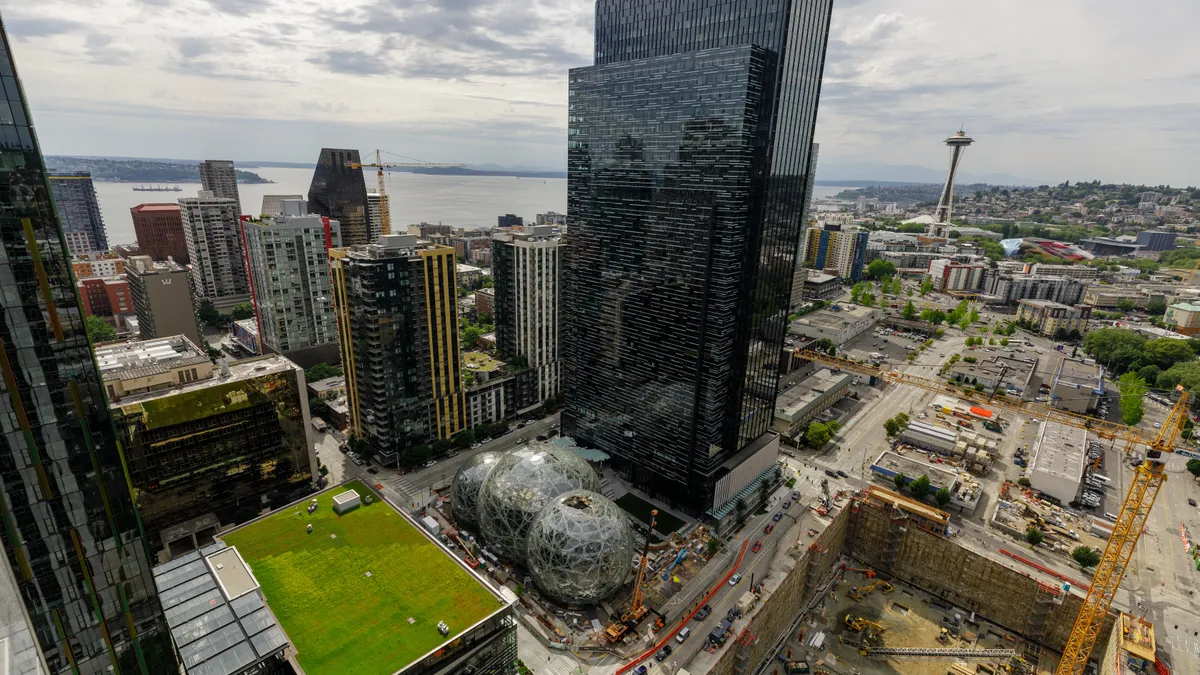Dive Brief:
-
Amazon has whittled down its list of 238 potential North American cities to host its second headquarters to a mere 20, the e-commerce giant said in a press release Thursday.
-
The cities are, in the U.S.: Atlanta; Austin, TX; Boston; Chicago; Columbus, OH; Dallas; Denver; Indianapolis; Los Angeles; Miami; Montgomery County, MD; Nashville, TN; Newark, NJ; New York City; Northern Virginia, VA; Philadelphia; Pittsburgh; Raleigh, NC; and Washington, D.C. In Canada, Toronto, ON made the list.
-
In the coming months, Amazon will work with each of the candidates to "dive deeper" into their proposals, request additional information and evaluate the feasibility of a partnership that must accommodate the company’s hiring plans, the company said, adding it expects to make a final decision this year.
Dive Insight:
While the list resembles the guesses from many quarters, there are some surprises.
A few of the cities on Amazon's final list don't appear to adhere to the e-commerce giant's own specs, according to retail analyst Nick Egelanian, president of retail development consultants SiteWorks International, noting that Amazon had specified three criteria in particular: (A) proximity to a large college graduate employment pool, (B) availability of mass transit and (C) proximity to an international airport.
"There is a fourth that I expect to come in to play — (D) location on the East Coast — that I think should be looked at for each city," he told Retail Dive in an email. "I am surprised by how many of these lack one or more of these."
Jim Fosina, CEO of Fosina Marketing Group, believes Amazon in the end will land on the East Coast in one of the smaller cities. Quality of life concerns for its employees will likely steer Amazon away from the major metro areas.
"As it is with Seattle, Amazon, I believe likes to be seen as a major player in the market that they reside. This would work against major cities like New York, Chicago etc.," Fosina said in an email to Retail Dive. "Amazon is also very focused on quality of life for their employees, the total package, housing, education, lifestyle etc. In my opinion this also lends itself towards smaller markets."
Prepare for some serious jockeying among these final 20, Fosina said. "Suffice to say, billions of dollars in revenue for the market and over 50,000 new jobs from the major player in e-commerce will have all markets putting their best foot forward in terms of a package that will entice them," he said.
Judging from the first round, things could get intense. Starting on Sept. 7 last year (the day Amazon first announced its search for a second headquarters), mayors, governors and city council members from all over the United States found various ways to shout "Pick me!" like the donkey in the movie Shrek, and many observers were embarrassed for them.
But there's ample reason to try so hard to win, considering Amazon CEO Jeff Bezos said the campus will be "a full equal to our Seattle headquarters." Beyond the obvious prospect of new jobs (Amazon said it’ll have 50,000 mostly well-paying slots to fill in the next 10 years), government leaders know that the arrival of a company at the vanguard of retail and technology is a signal to yet other companies that an area is a good place to settle.
Getting to 20 from nearly 240 wasn't easy, Holly Sullivan of Amazon's Public Policy team said. "[A]ll the proposals showed tremendous enthusiasm and creativity," she said in a statement. "Through this process we learned about many new communities across North America that we will consider as locations for future infrastructure investment and job creation."
The final pare-down to 20 may not be any easier, though. Amazon aims to learn more about each locale, and that could mean some amount of expectation for cities to sweeten the pot with incentives even beyond any they outlined in their initial proposals. The cities have their own concerns about the side effects of Amazon putting down stakes, which could accelerate urban development to a problematic degree and invite problems like housing spikes, traffic snarls and constant disruption from massive construction.














